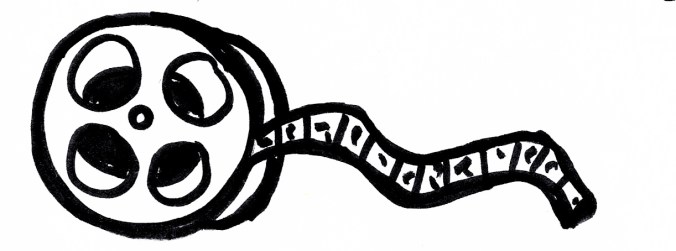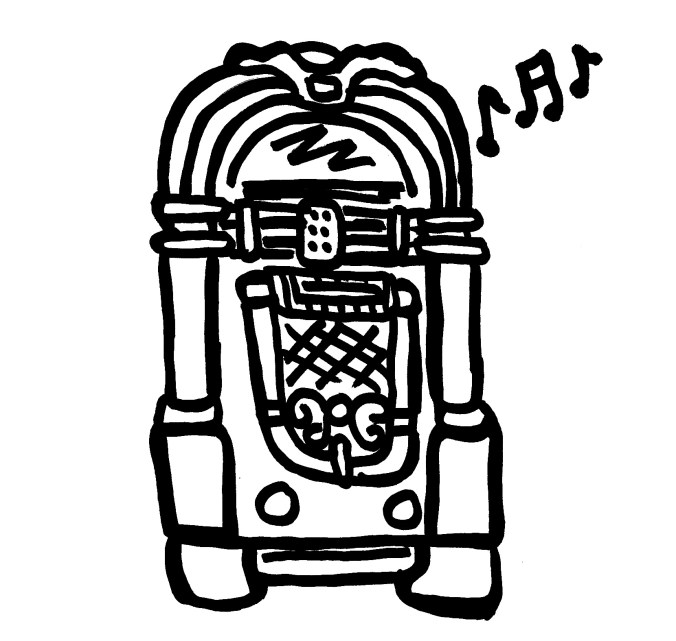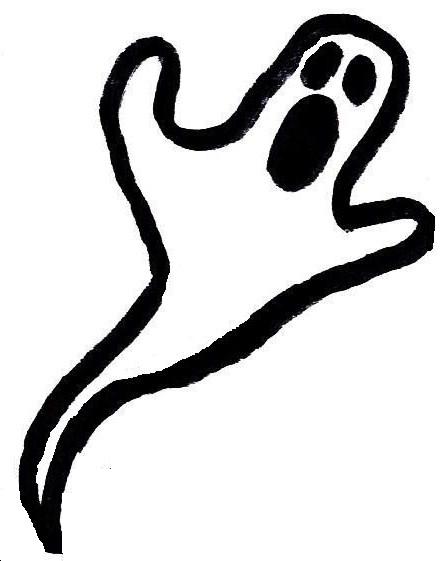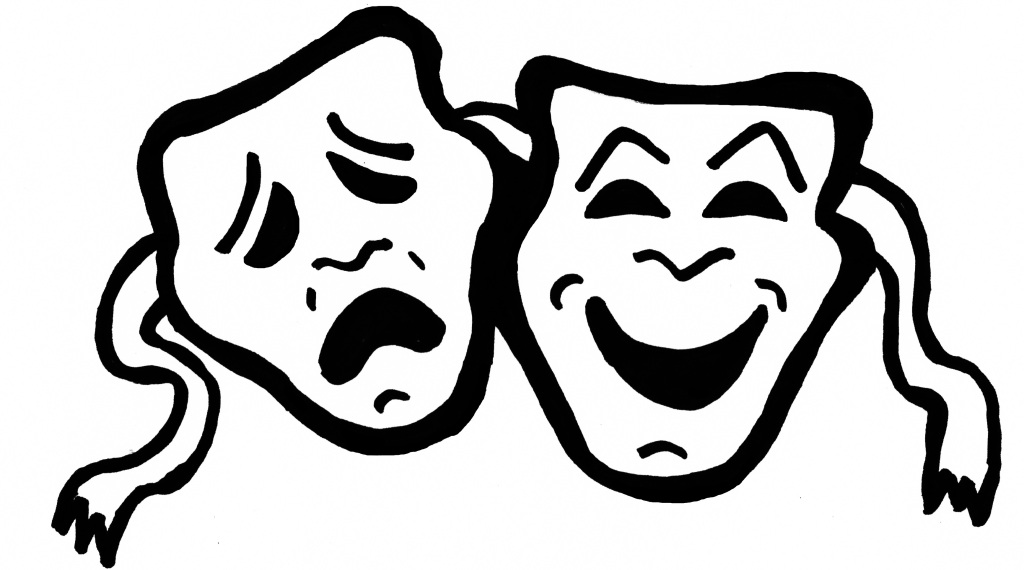Excluding the AMC multiplexes out in the suburbs, the Zeitgeist outpost in Arabi, and the backroom microcinemas in-between, there are exactly two regularly operational cinema hubs in Orleans Parish: The Prytania and The Broad. Both of these cultural epicenters work hard to make full use of their relatively limited screen space, finding the right balance between the arthouse titles that keep their die-hard regulars hooked and the big-ticket Disney products that actually keep the lights on. The most noble service The Prytania and The Broad provide is making room for regular, weekly repertory programming in the schedule gaps between new releases. Not too long ago, the Sunday morning Classic Movies slot at The Prytania Uptown was the only reliable spot to catch older titles in a proper theater around here, but the New Orleans repertory scene has gradually bulked up in recent years. The Broad has a classic horror movie slot every Monday night through ScreamFest NOLA (who’ve recently screened classics like Ginger Snaps, Frankenhooker, and Day of the Dead), an arthouse repertory slot every Wednesday night via Gap Tooth Cinema (who’ve recently screened once-in-a-lifetime obscurities like The Idiots, Supervixens, and Adua and Her Friends), and frequent specialty screenings at their neighboring outdoor venue The Broadside. Meanwhile, Rene Brunet’s Classic Movie Series is still going strong at The Prytania (recent standout titles: The Conversation, Dial ‘M’ for Murder, and 13 Ghosts in Illusion-O), and they’ve recently collaborated with the folks at Overlook Film Fest to program classic horror titles as well (Frankenstein, The Exorcist, and Interview with the Vampire, among others, during this year’s in-house “Kill-O-Rama” festival). Between these two businesses’ four locations, you can also routinely find specialty one-off screenings & re-releases on the weekly schedules (recently, Battle Royale & Linda Linda Linda at The Prytania’s Canal Place theaters and Night of the Juggler & Leila and the Wolves at The Broad).
All in all, our local rep scene is still too small to compete with larger cities like Los Angeles, New York, Austin, Chicago, Toronto, and San Francisco, where audiences seemingly get to see an older “new-to-you” title projected on the big screen every day of the week. New Orleans rep screenings are out there, though, and they are easily accessible if you know where to look. As evidence that this scene exists, here are a few quick short-form reviews of the repertory screenings I happened to catch around the city over the past couple weeks, along with notes on where I found them. I’ve also recently started a Letterboxd list to track what classic titles we’ve been able to cover on Swampflix over the years thanks to this growing scene, which seems to have only gotten more robust since I last filed one of these reports in 2023.
The Asphalt Jungle (1950)
The original Uptown location of The Prytania is still the most consistent local venue for seeing repertory titles on the big screen, as it has been for as long as I can remember. The only catch is that their Classic Movies program is almost entirely restricted to Hollywood productions, the kinds of titles you expect to see on TCM’s weekly broadcast schedule. As limited in range as that may sound, it’s an excellent resource for catching up with the works of luminary greats like Kubrick, Welles, and Hitchcock that you might’ve missed (especially Hitchcock, their house-favorite auteur), big & loud in an environment where you’re unlikely to get distracted by your phone. To that end, I recently saw John Huston’s foundational diamond-heist thriller The Asphalt Jungle for the first time as part of that series, after having previously seen Huston’s foundational noir The Maltese Falcon there several years earlier. Within the heist-thriller genre, there’s nothing especially surprising about The Asphalt Jungle‘s scene-to-scene plot beats, as it is an immeasurably influential work that helped establish that genre’s basic story structure in the first place. Where it does manage to surprise is in the little details of the character quirks, as it gradually becomes a story about the unlikely friendship between the elderly mastermind and the young hooligan muscle at opposite ends of the criminal hierarchy, both of whom are equally doomed. The framing compositions are also top-notch; that John Huston kid is a name to watch, I tell you what.
It would be disingenuous to call The Asphalt Jungle a hangout film, as there is plenty of urgent thriller tension in its textbook bank heist plot. The four factions vying for victory are clearly defined: the heist crew hastily assembled by a recently-paroled criminal mastermind (Sam Jaffe), the crooked lawyer who intends to steal away that crew’s loot for himself (Louis Calhern), the corrupt cop who pretends to be on their case while taking bribes beneath the table (Barry Kelley), and the by-the-books police commissioner who still believes in the nobility of obeying the law (John McIntire). The cops’ involvement in the diamond-heist fallout is mostly present as a background inevitability, something that makes the crooked lawyer sweat as he schemes to rip off his own accomplices. The real heart of the story is in the way the bank robbers pass their time between the heist and getting caught, recalling the crime-thriller hangouts of Quentin Tarantino’s oeuvre. There’s something sweet in the simple, pleasure-seeking worldviews of the mastermind and the hothead muscle (Sterling Hayden) in particular — one of whom meets his end while taking the time to watch a teen girl dance to a roadside diner jukebox and the other meeting his own end while indulging in homesick nostalgia, feebly returning to his family farm while he slowly bleeds to death from a gunshot wound. A baby-faced Marilyn Monroe also makes a huge impression in the couple scenes afforded to her as the crooked lawyer’s age-gap mistress, exclaiming “Yipe!” whenever she gets excited, and referring to her much older lover by pet names like “Uncle” and “Banana Head.” The editing rhythms of The Asphalt Jungle are not especially hurried or thrilling, but Huston arranges his performers in the Academy-ratio frame with consistently adept blocking, and he constantly feeds them all-timer lines of dialogue like, “Experience has taught me never to trust a policeman. Just when you think one’s all right, he turns legit.” It’s a great mood to sit in, especially once its noir-archetype characters start making unlikely friends & foes in the hours after the plot-catalyst heist.
Black Narcissus (1947)
Curiously, my most recent dip into the Gap Tooth Cinema program at The Broad was also a classic title you could expect to catch in TCM’s broadcast line-up, whereas the series is generally more unique for its “Where else would you ever see this?” selections (On the Silver Globe, Entertaining Mr. Sloane, Coonskin, etc.). 1947’s Black Narcissus is as core of a text to nuns-in-crisis cinema as The Asphalt Jungle is to bank heist thrillers. If it’s not the most often seen & referenced convent drama, that’s only because The Sound of Music has a more iconic sing-a-long soundtrack, whereas most of the sound design in Black Narcissus is overpowered by howling, ominous winds. It was hearing those winds in immersive theatrical surround sound that made this first-time watch so memorably intense for me, though, whereas Powell & Pressburger’s follow-up ballet industry melodrama The Red Shoes is more striking for its three-strip Technicolor fantasia. While there are flashes of Technicolor brilliance throughout Black Narcissus, the combination of its doomed nuns’ white habits & skin is so uniformly pale the film often registers as monochrome. It’s the constant roar of the cold winds that gradually break those nuns’ minds along with the audience’s, eventually triggering the passionate, color-saturated violence of the third act. I know it’s gauche to describe anything as “Lynchian” these days, but those howling winds are maddening in a distinctly Lynchian way, and it turns out the production was filmed the same year Lynch himself was born. Coincidence? I think not.
The sinful evil those winds summon is mostly the seduction of nostalgia & memory. Deborah Kerr stars as a remarkably young Mother Superior who’s assigned to start a new convent in a former cliffside harem in the Himalayas, offering medicine and education to the Indian locals who don’t need or want the nuns’ presence. The isolation of the newly repurposed “house of women” on that mountaintop weighs on the sisters who are assigned there, as the ominous winds and dizzying altitude invite their minds to drift to memories from before they took their holy vows. Since it’s a British studio picture made in the 1940s, the nuns never express the transgression directly, but they specifically start to doubt their commitment to Christ because they’ve become desperately horny & lonely, to the point of madness. The burly presence of a blowhard macho handyman onsite is especially tempting for the women, and their repressed desire for him explodes into expressionistically violent acts that can only lead to death, never actual sex. It’s in those climactic violent acts that Black Narcissus most directly recalls the dark fantasy gestures of The Red Shoes, especially in the sisters’ extreme, wild-eyed close-ups. The winds that push them towards the matte-painting cliffsides outside the convent are much more consistently surreal throughout, however, recalling much later, freer works like David Lynch’s Twin Peaks: The Return or Hiroshi Teshigahara’s Woman in the Dunes.
Mr. Melvin (1989, 2025)
While The Prytania’s Classic Movies and The Broad’s Gap Tooth series are dependable workhorse repertory programs, you have to walk next door from The Broad to their outdoor sister venue The Broadside to catch the more extravagant specialty screenings. For instance, it’s where I caught Lamberto Bava’s classic Italo meta-horror Demons with a live score from Goblin’s Claudio Simonetti and, more recently, it’s where I caught the new remix of The Toxic Avenger Parts II & III (1989), now Frankensteined together and retitled as Mr. Melvin (2025). That Mr. Melvin screening was supposed to be accompanied with a Lloyd Kaufman meet & greet, but the recently injured Kaufman couldn’t travel so he appeared only via video message, sending Troma regular Lisa Gaye to act as his brand ambassador instead. The movie was also accompanied with an opening punk rock set from The Pallbearers, making for a much rowdier setting than is typical for movie-nerd rep screenings around the city. The general party atmosphere at The Broadside can be distracting if you’ve never seen the film they’re screening before (I remember being especially distracted by the circus-act antics of Gap Tooth’s showing of Carny there), but it’s perfect for celebrating a VHS-era classic that you’re used to watching alone at home. The timing of this Mr. Melvin cut was personally serendipitous for me, then, as I had just watched every Toxic Avenger film for a podcast episode the previous month.
Since I had already exorcised all my demonic opinions about Toxie’s big-screen journey so recently on the podcast, I don’t have much new to say about Mr. Melvin except in pinpointing where it ranks among other titles in the series. Objectively, the best Toxic Avenger film is likely either the bad-taste original from 1984 or Macon Blair’s punching-up revision that was also released this year, and yet I can’t help but admire Mr. Melvin as a completionist’s timesaver. It’s all the best parts of the official Toxie sequels (the Japanese travelogue from Toxic Avenger II, the Toxie-goes-yuppie satire of Toxic Avenger III, not a single frame from Toxic Avenger IV) with at least 70 minutes of time-wasting junk erased from the public record. Mathematically speaking, it’s the most efficiently entertaining Toxic Avenger film to date, which technically qualifies it as public service — something to be considered by Lloyd Kaufman’s parole board. And since the original, in-tact sequels were rotting so close to the forefront of my mind, I was able to step away during the screening to grab another beer without missing anything, which is essential to appreciating any Troma release. You go to The Prytania to watch Old Hollywood classics in a historic setting, sipping morning coffee to the vintage Looney Tunes shorts that precede the feature. You go to Gap Tooth screenings at The Broad to challenge yourself with some daringly curated arthouse obscurities, chatting with friends afterwards to parse through complex feelings & ideas. In contrast, the repertory programming next door at The Broadside is for pounding beers and whooping along to a personal fav you’ve already seen a couple dozen times with likeminded freaks. Plan your repertory outings accordingly.
-Brandon Ledet
















































